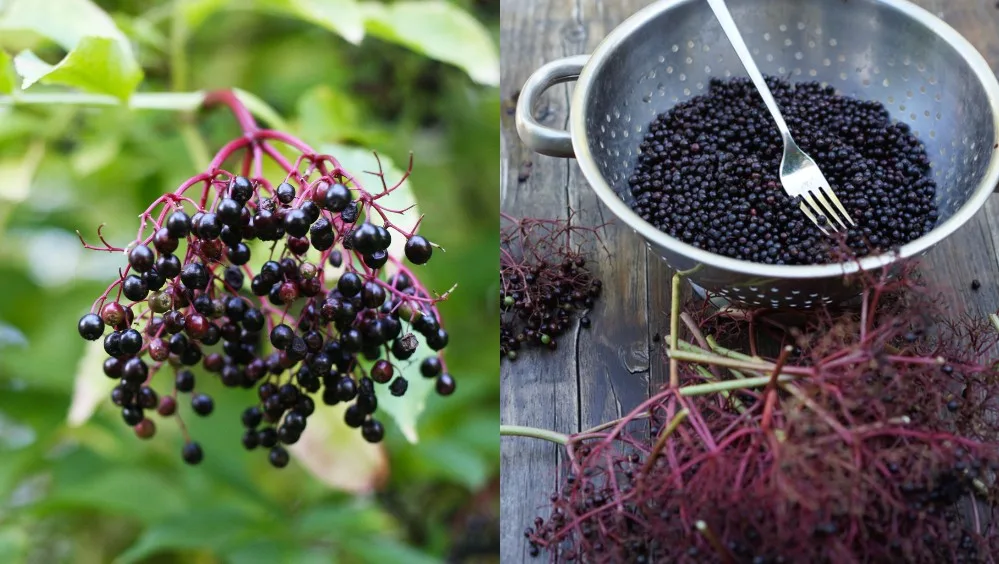
Elderberries are one of my favorite fall-garden attractions. Where elders grow, the glossy, black berries on their reddish-pink stems are a definitive sight of the season.
Here on our homestead, harvesting elderberries is one of the more pleasurable jobs of the month. They’re the perfect accompaniment for our harvests of apples and other fall fruits.
We use the berries to make a range of jams and preserves. And we’ve also made some elderberry wine, which makes a great Christmas gift.
Easy to grow and extremely useful, elder makes a great addition to many gardens.
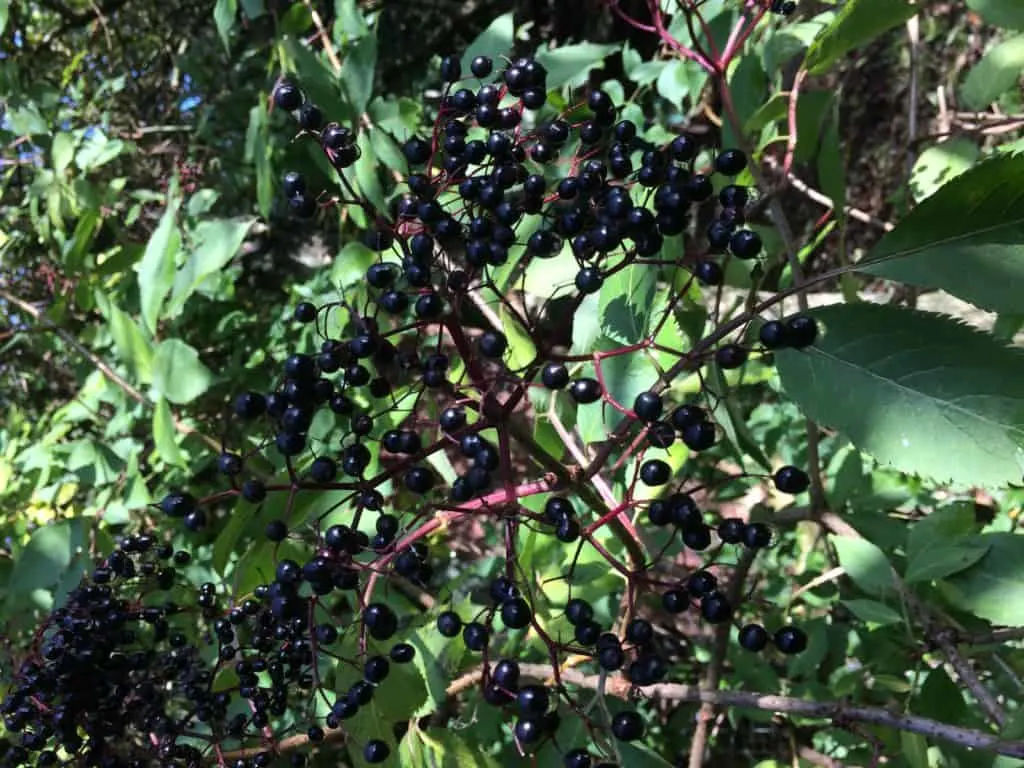
Read on to learn more about elders, why and how to grow them, how to propagate elder, how to harvest them, and what to do with the berries once harvested.
What Are Elderberries?
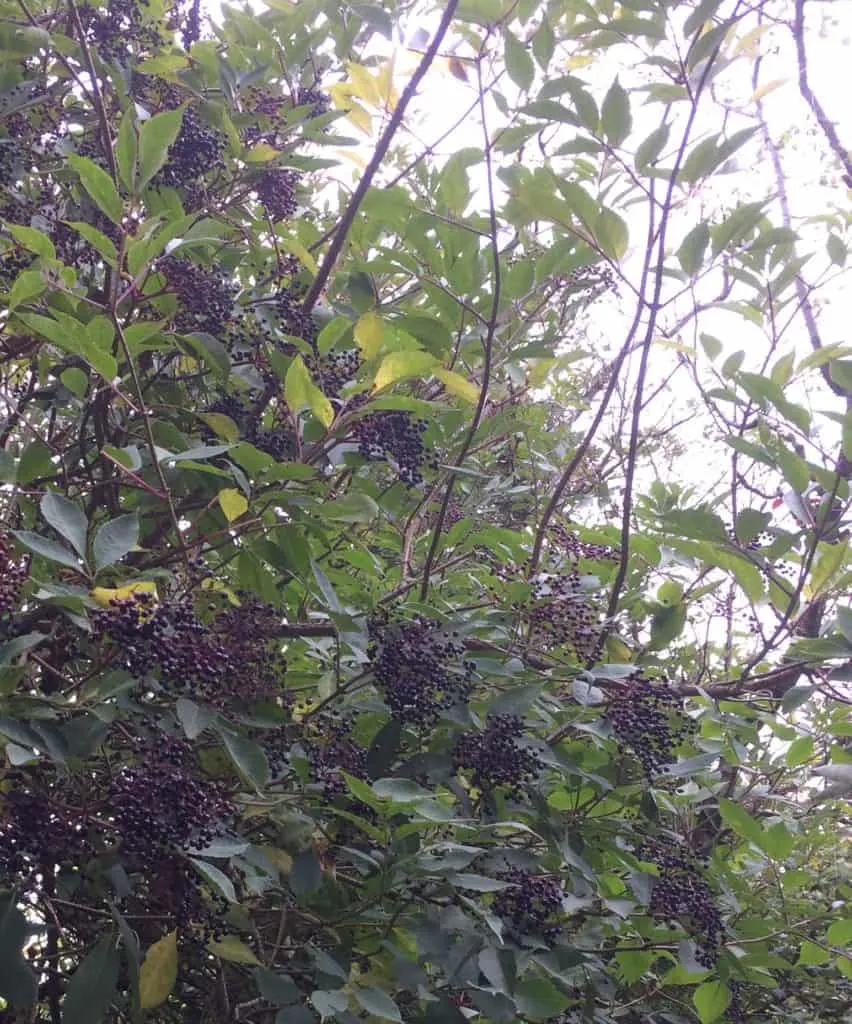
Elderberries are the berries of the elder, Sambucus Nigra, a large shrub or small tree that grows quickly to an eventual size of around 6m x 6m.
It’s an extremely hardy plant that isn’t frost tender and can grow in a wide range of settings.
In leaf between March and November, the elder flowers with soft champagne-white flowers between June and July. You can harvest the flowers and use them in a number of ways, including our favorite “Elderflower Champagne“
If you leave the flowers on the tree, the flowers turn into berries which ripen between August and October.
Why Grow Elderberries?
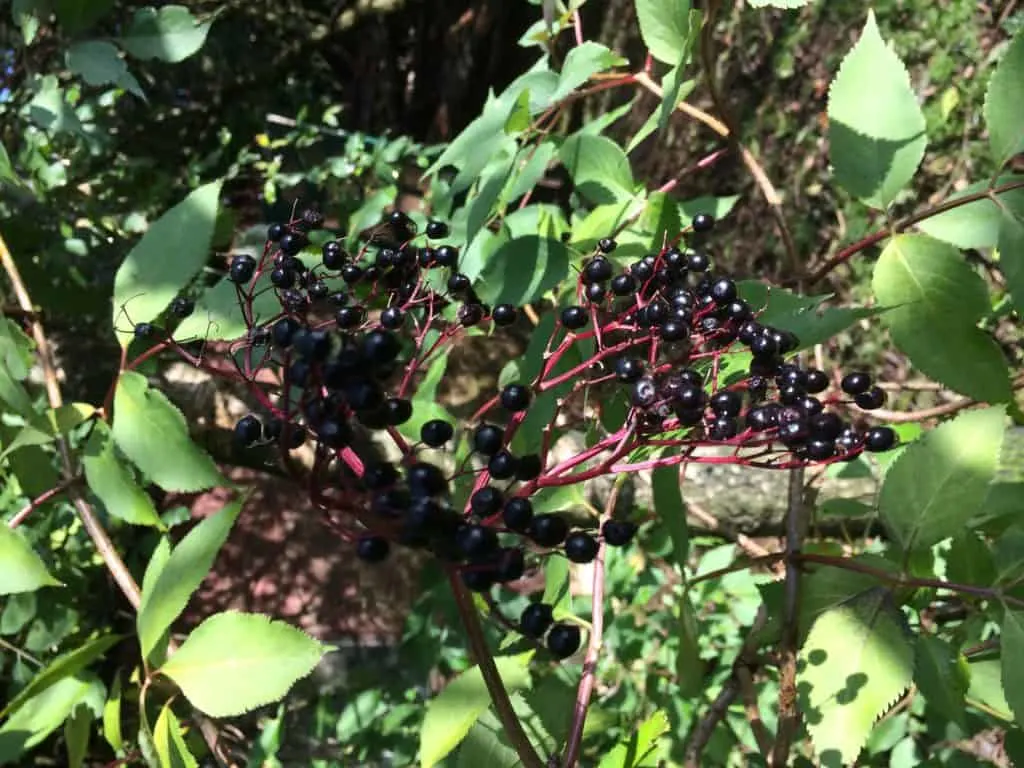
Elderberries are commonly found in the wild, or in hedgerows, making them popular among foragers. However, it’s also worthwhile considering growing elder in your own space.
One of the good things about elders is that they’re suitable for growing in a wide range of conditions.
Not only can they cope with a cold winter climate, but they’re also suitable for growing in sandy, loamy, or clay soils, and can even cope well with heavy clays.
They’re also unfussy when it comes to soil pH, and will grow in acid soils right through to very alkaline areas.
Everything Elder
The berries are only one of the yields from these useful plants. Here are some of the other useful parts of the elder:
- Harvest the flowers early in the season for cordials and champagnes etc..
- You can also use the flowers to make lotions, oils, and ointments.
- Add elderflowers to your compost heap. Even the roots of the plant can improve fermentation of the compost heap when grown nearby.
- Rub the crushed leaves on your skin to keep insects at bay.
- You can also use the leaves to make a spray to treat fungal infections on plants, such as leaf rot and powdery mildew. (3-4 handfuls of leaves are placed in a liter of water and boiled, then strained, cooled and applied.)
- Use the fruit, leaves, and bark of the elder to make natural dyes. The bark of older branches gives a black dye. Make a green dye from the leaves using alum as a mordant. And of course, the berries give various dyes of blue and purple hues.
- The wood of the elder is also valuable. While it’s of little use as firewood, it is commonly used to make blowpipes, wands, skewers, or musical instruments. The mature wood is white and fine-grained. It cuts easily and polishes well and has multiple uses in carpentry.
Other Benefits of Growing Elders
Elders are also wonderful for attracting wildlife to the garden. They provide a good food source not just for humans but also for a wide range of birds, mammals, and other animals.
Since they can cope with a range of challenging conditions, elders are ideal as pioneer species when re-establishing woodlands. They also make excellent shelterbelts or hedges – even in exposed maritime locations.
Because they grow very fast, elder can be a great choice for quick protection from winds etc.. They’re also a good choice for coppicing systems. When cut down to ground level, elder will quickly regrow from the base.
The Benefits of Eating Elderberries
Elderberries are great for boosting immunity during the cold and flu season. They’re rich in vitamins A, B and C, and full of healthy antioxidants such as carotenoids and flavonoids.
How To Grow Elderberries
You can grow elder from seed as soon as it’s ripe in the fall. Sow seed in a cold frame and it should germinate in early spring. (A period of cold is required in order for germination to take place successfully.)
After the seeds have germinated, plant seedlings in individual pots once they’re large enough to handle. They can then be planted in their permanent positions during early summer.
You can also use semi-ripe (July-August) and hardwood cuttings (late fall) to propagate these plants.
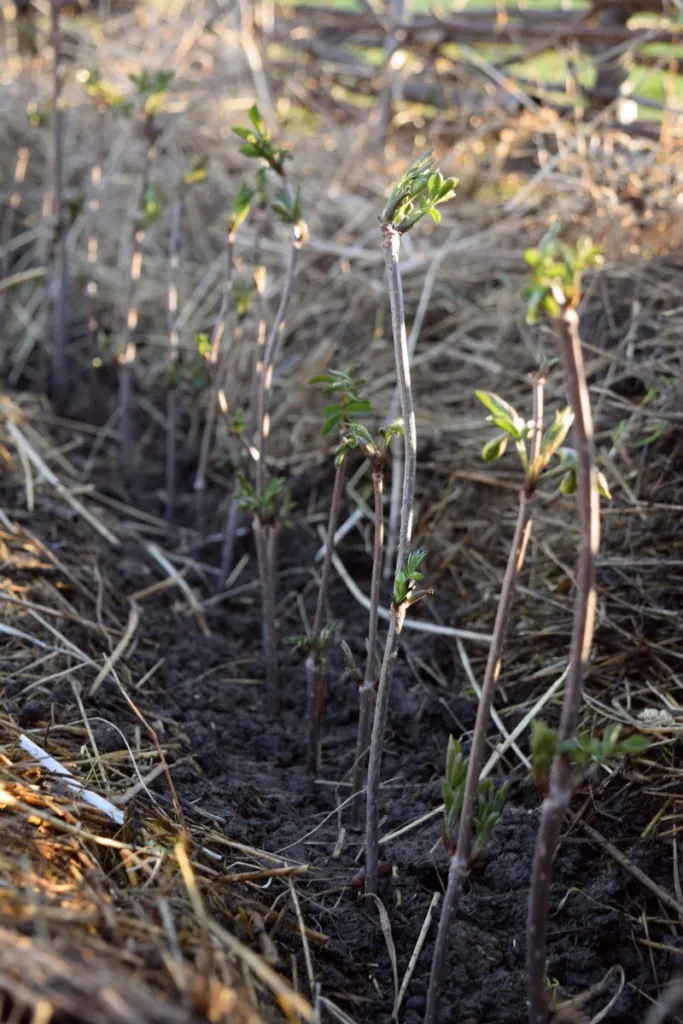
However, perhaps the easiest way to obtain new elder plants is by division of suckers during the dormant period, between late fall and early spring.
Flowers will be ready to harvest in the summer, and the berries will be ready to harvest in the fall.
Prune your elders fairly aggressively after the berries have been harvested and the leaves have fallen. This will keep your plants healthy and in check and encourage the formation of new growth.
How To Harvest Elderberries
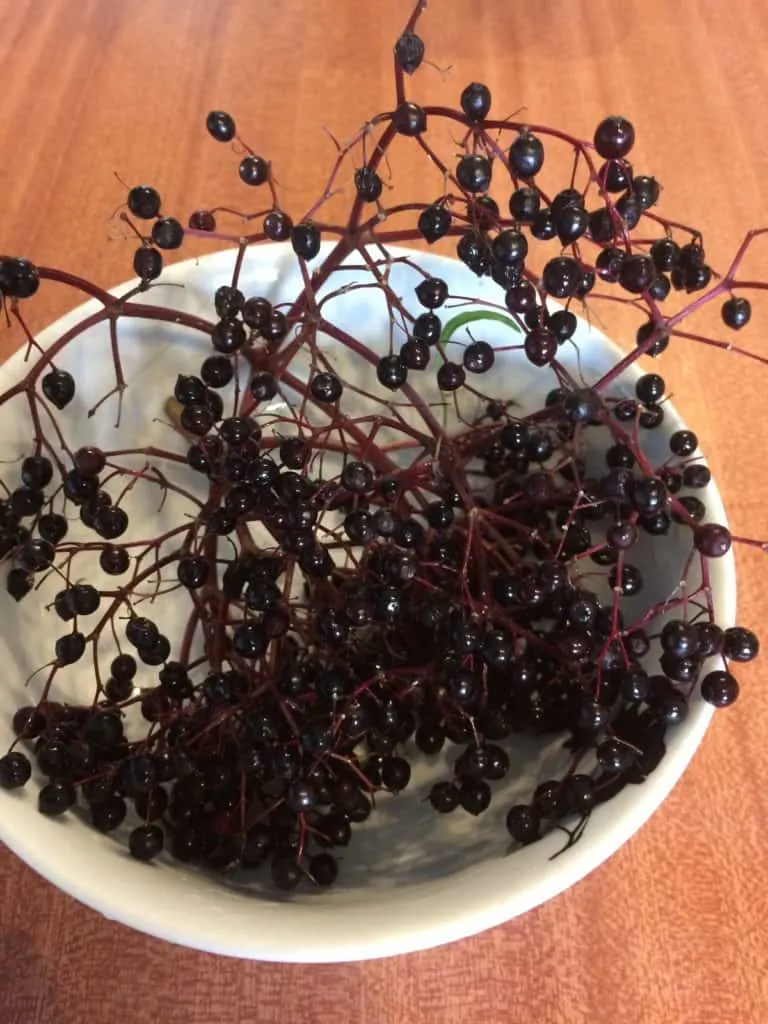
Elderberries are ready to harvest when they’re dark and purplish-black, yet still full and glossy. Remove any green (unripe) or shriveled berries.
Simply pull the large clusters of ripe berries off the plants, or cut them off using a pair of scissors or a gardening knife.
Separating the berries from the stalks can be a rather messy and time consuming process. Picking the berries off one by one can take a lot of time. You can speed up the process by removing the berries using the tines of a fork.
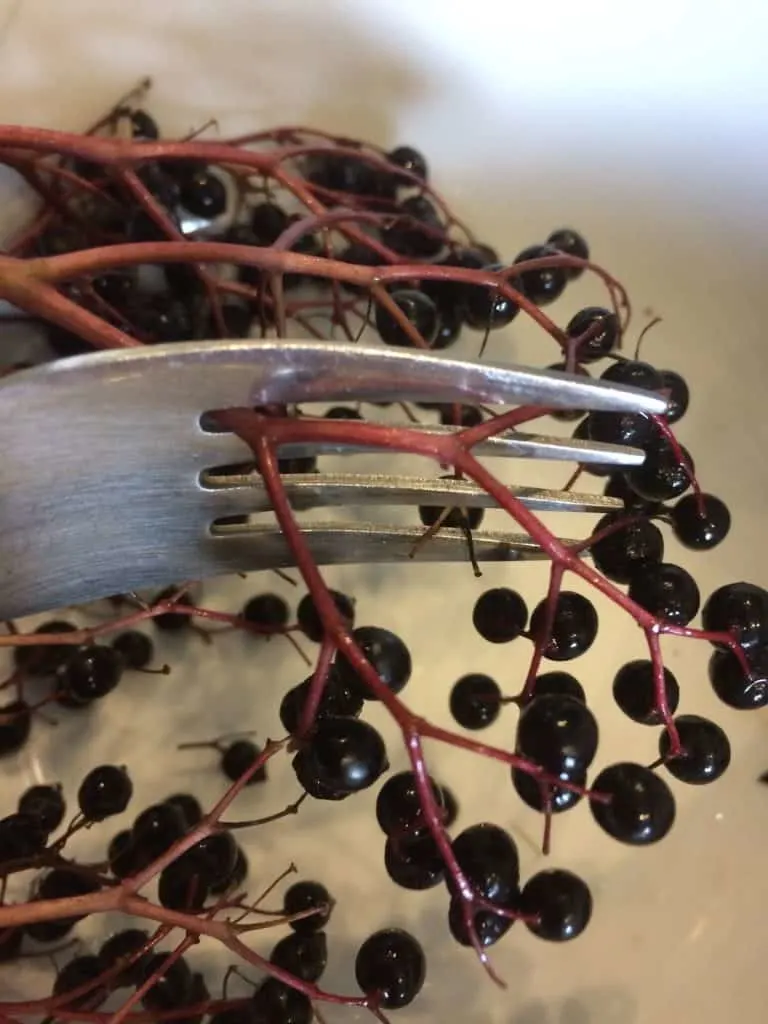
It’s important to note that the leaves and bark of the elder are poisonous and should never be eaten. And the berries should only be eaten once cooked, and never raw.
Once the berries are separated from the stems, place them in a colander and wash them thoroughly under running water. Remove any debris, and unripe, or shriveled berries as you do.
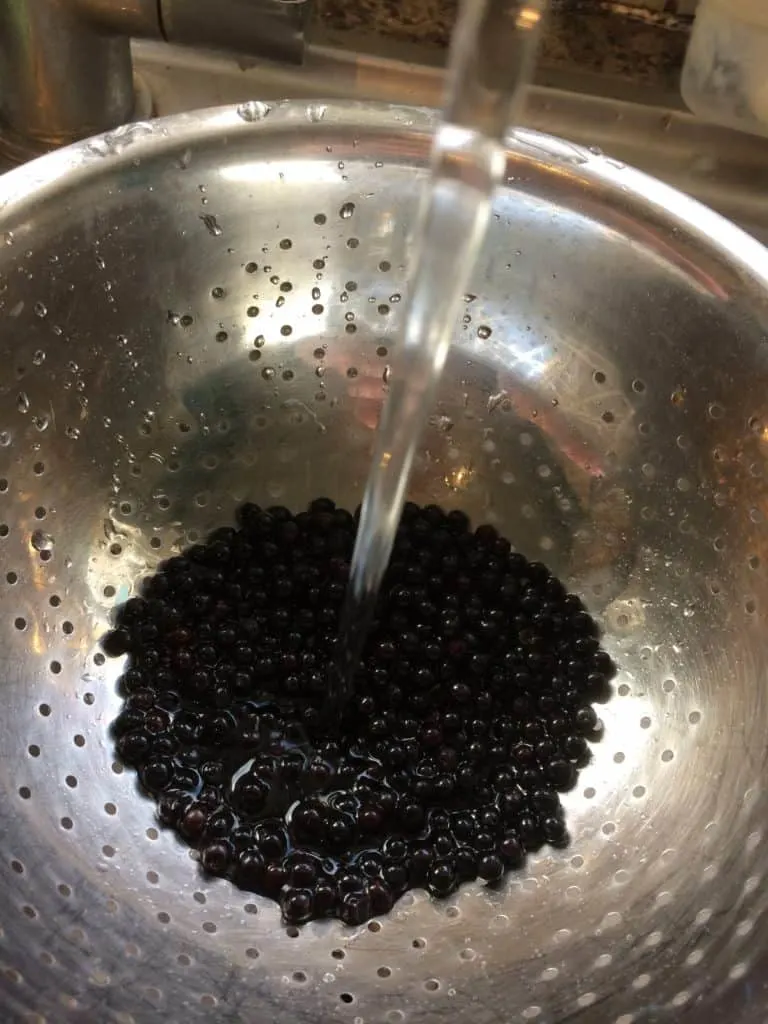
Preserving Elderberries
If you don’t wish to use your berries right away, you can:
- Freeze them.
- Dry them. (Using your oven or a dehydrator if you live in a more humid climate, or simply drying them on a tray on a sunny windowsill in a less humid region.)
- Make a preserve (using one of the recipes below).
What To Do With Elderberries
There is a range of different culinary uses for elderberries. Here are just some of the things that you can consider doing with the berries you have grown or foraged:
Elderberry Syrup
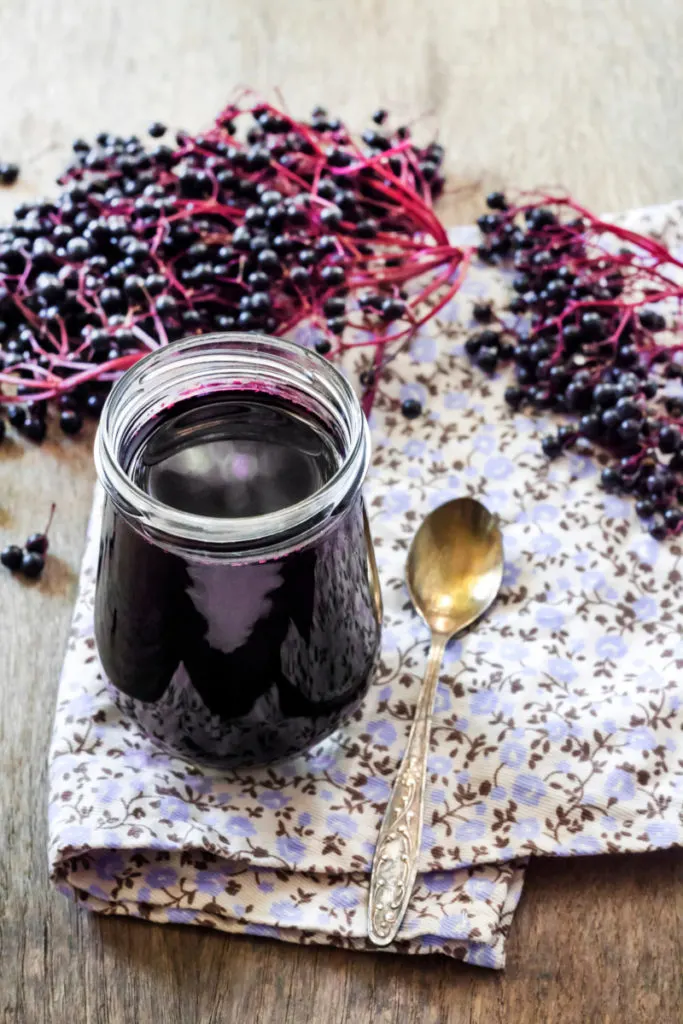
Elderberry syrup can be used as an immune-boosting herbal remedy, or as a condiment to pour over homemade breakfasts or desserts. Traditionally, such a syrup is often made with sugar, though a healthier option can be made using locally produced honey, as in the recipe at the link below.
Elderberry Syrup @ wellnessmama.com.
Elderberry Cordial
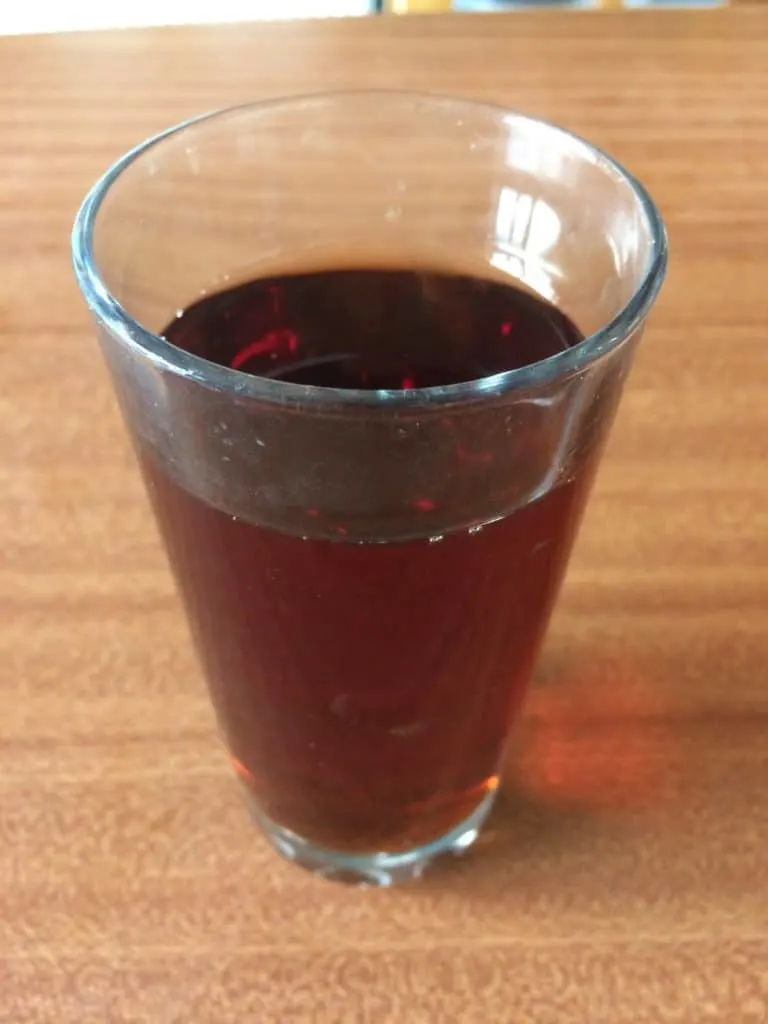
A health-giving drink can also be made using a similar method. Many elderberry cordials use sugar to add sweetness. Again, consider using local honey, as in the simple recipe given below.
Elderberry cordial @ allrecipes.co.uk
Apple and Elderberry Jelly
Elderberries are excellent additions to a range of preserves. One example is apple and elderberry jelly. Combining elderberries with apples (or crab apples) or adding apple pectin helps to make sure the jelly will set since the elderberries themselves are low in pectin.
Apple and elderberry jelly @ smallcitybigpersonality.co.uk
Elderberry Jam
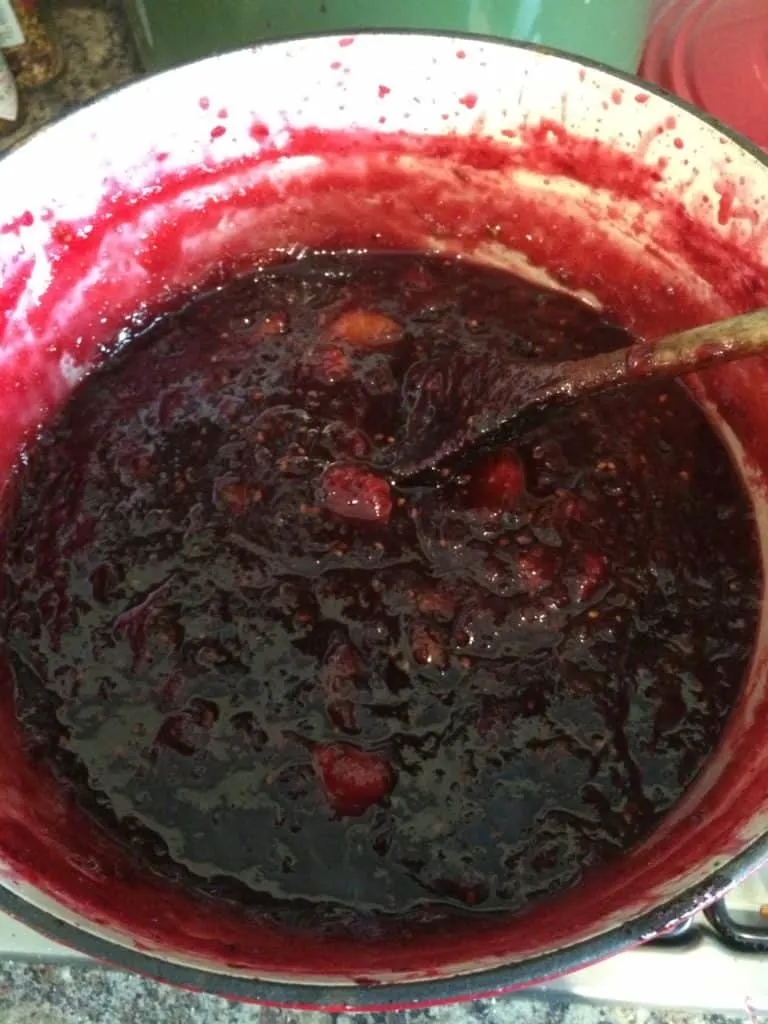
The berries can also be used to make a range of jams (for which no jelly bag or strainer is required).
Again, it’s important to remember that elderberries are naturally low in pectin. You’ll have to add some lemon peel, or apple pectin to the mix, or use jam sugar in order to set your preserve.
Easy elderberry jam @ allrecipes.co.uk
Elderberry Chutney
A sweet yet savory preserve that goes extremely well with cheeses, elderberry chutney is another variation on the theme – a way to preserve your harvest to eat over the winter months.
Elderberry chutney @ larderlove.com.
Elderberry Wine
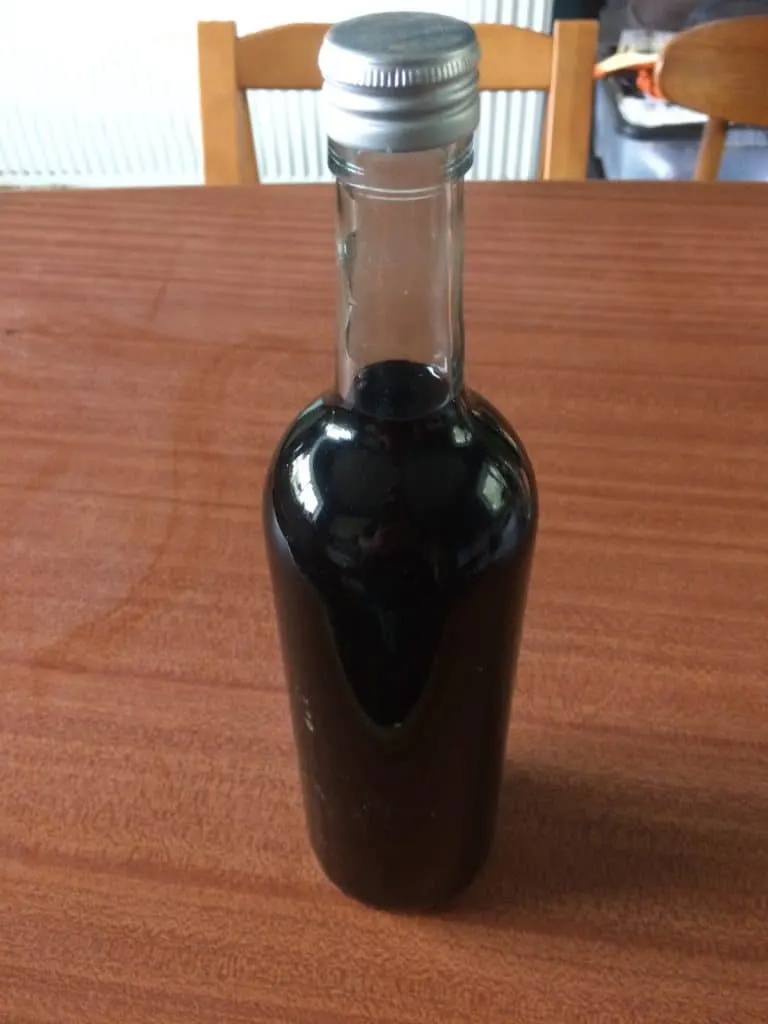
If you have a lot of elderberries, one great way to use them up is in by making wine. Unlike many fruit or hedgerow wines, elderberry wine can hold its own against many traditional grape wines out there.
You’ll need some specialist wine-making equipment, but if you follow all the steps you should get an excellent wine at the end of the process.
Elderberry wine @ countryfile.com.
Elderberry Pie
An elderberry syrup poured over ground almonds makes a delicious filling for a pie topped with shortcrust pastry. Of course, you could also consider filling your pie with elderberries combined with apples, blackberries or other fall fruits.
Elderberry pie @ bbcgoodfood.com
Elderberry Crumble
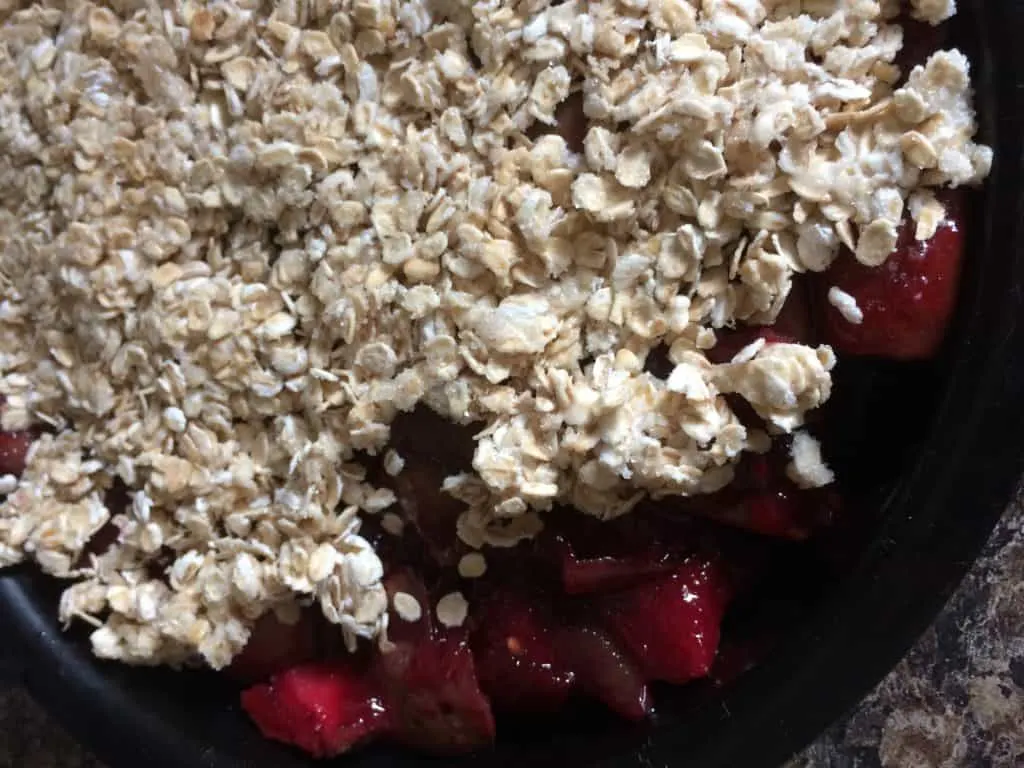
Elderberries lend themselves well to a wide range of dessert recipes that combine these fresh berries with other fall fruits, such as blackberries and apples. A crumble can be topped with a traditional flour based crumble topping as in the recipe below, or with an oat topping.
Elderberry crumble @ hedgerowharvest.org.uk
Elderberry Muffins
You can also bake your berries into a range of different cakes and muffins. One somewhat healthier option is this muffin recipe which uses honey instead of sugar. This makes for a delicious breakfast option for those chilly winter mornings.
Elderberry muffins @ honeygardens.com
Elderberry Ice Cream
One other way to use elderberry syrup if you have an ice cream maker is to make a delicious, fruity elderberry ice cream. This is another sweet treat that the whole family can enjoy.
Elderberry Ice Cream @ honest-food.net.
Elderberry Liqueur
A great way to enjoy the fruity flavor of elderberries is to infuse them into a spirit for a winter liqueur. The fresh berries are infused in a sealed jar or another container of vodka or other spirit and placed in a dark cupboard for at least a month, and up to six months. Sugar is then added to create a liqueur that is delicious for drinks over the festive period.
Elderberry liqueur @ honest-food.net.
Pontack Sauce
Elderberries are generally sweetened and used to make sweet preserves and desserts. But there are also a few recipes which are more savory.
Pontack sauce is an elderberry ketchup that’s a traditional English condiment. It has a tangy flavor that is reminiscent of Worcestershire sauce and goes well with game meats.
Pontack Sauce @ andhereweare.net
These are just some of the many ways that you can use the elderberries from your garden or from nearby hedgerows. Whether you grow your own or forage for these berries in the surrounding area, why not try to make the most of this fall harvest this year?

Get the famous Rural Sprout newsletter delivered to your inbox.
Including Sunday musings from our editor, Tracey, as well as “What’s Up Wednesday” our roundup of what’s in season and new article updates and alerts.

